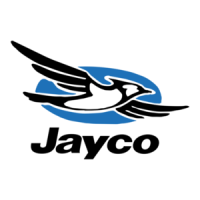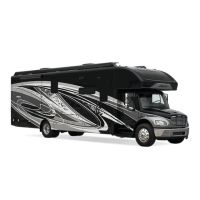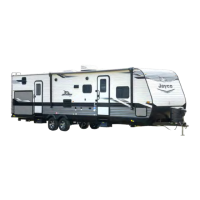28
Towing Behind Your Motor Home
Towing will aect vehicle handling, durability and fuel economy. Exceeding any of the
listed weight ratings will result in unacceptable overall vehicle performance. Your safety
and satisfaction require proper use of correct equipment.
For maximum pulling load and vertical tongue weight, refer to the label located on the rear
hitch. A hitch bar of appropriate strength and steel should be selected to meet the capacities
of the towing receptor.
Always use safety chains between the motor home and the towed trailer or vehicle. Cross
the chains under the tongue and allow for slack when turning corners. Connect the safety
chains to the vehicle frame or hook retainers. Never attach the safety chains to the bumper.
Before descending a steep or long grade when towing a trailer or vehicle, reduce speed and
shift the
, which can cause overheating or brake failure.
By denition the GCWR is “the maximum total weight rating allowed for a vehicle and any
attachment, such as a trailer or towed vehicle. To determine the total allowable weight for a
towed item, subtract the GVWR from the GCWR.
In addition, a separate supplemental braking system must be installed if the towed trailer or
vehicle meets or exceeds the minimum weight determined by the chassis manufacturer (this
minimum weight rating will vary by chassis and chassis manufacturer).
Do not install a frame equalizing type hitch on your motor home.
Do not assume that you can tow a
vehicle that happens to be within the capacity of the hitch. By doing so,
you may exceed the total GCWR of the motor home.
Once again, do not assume that
you can tow a trailer or vehicle that happens to be within the vertical
(tongue) weight capacity of the hitch. By doing so, you may exceed the
GVWR and/or GAWR of the motor home.
Any trailer or vehicle being towed by your mo-
tor home must have adequate brakes as required by all state (or province)
and local regulations for towing with your motor home, including areas
you may be traveling through.

